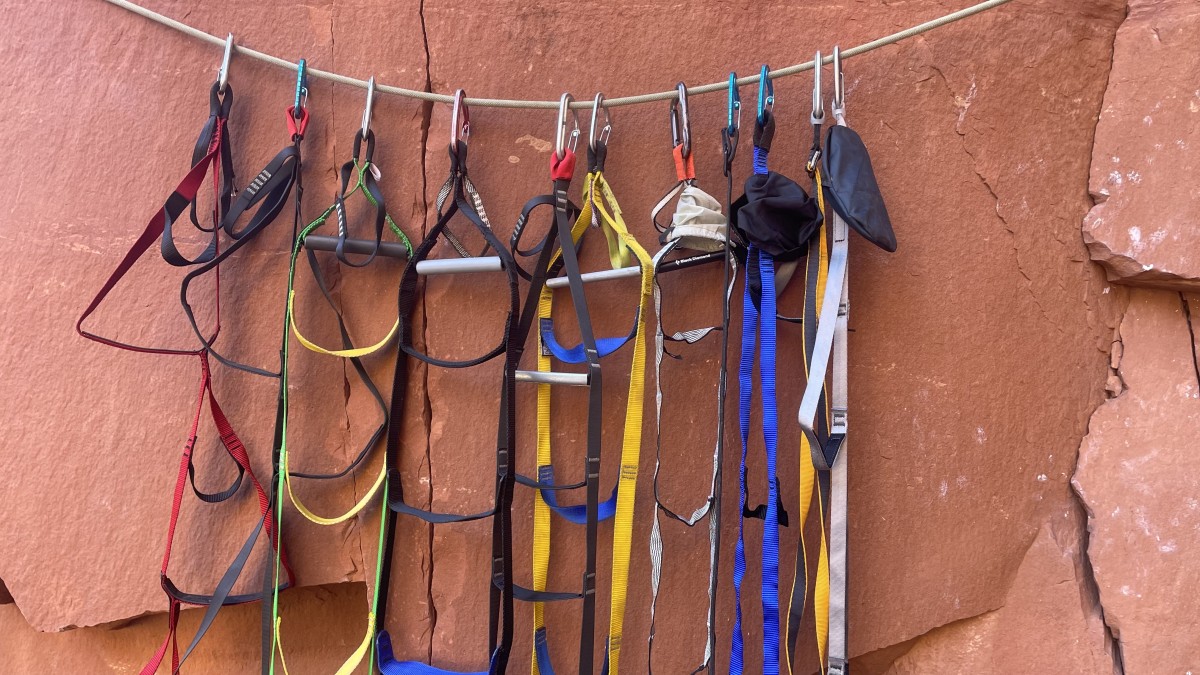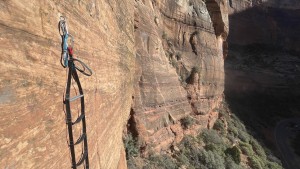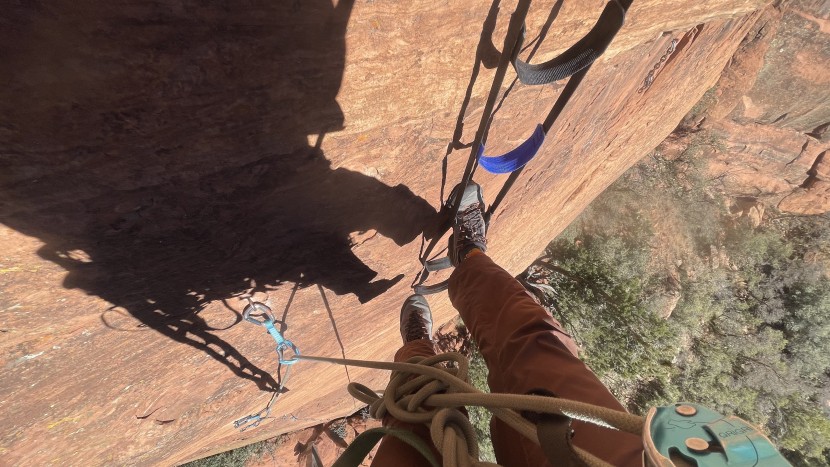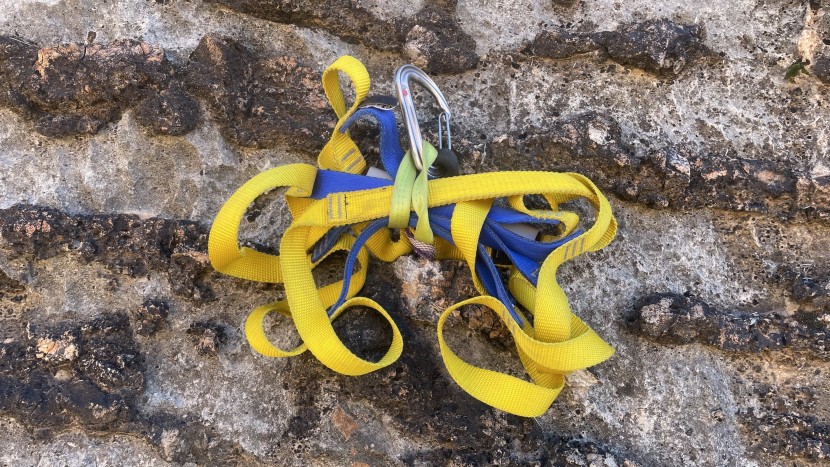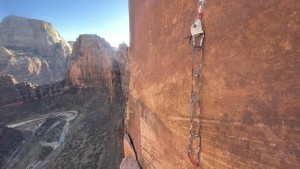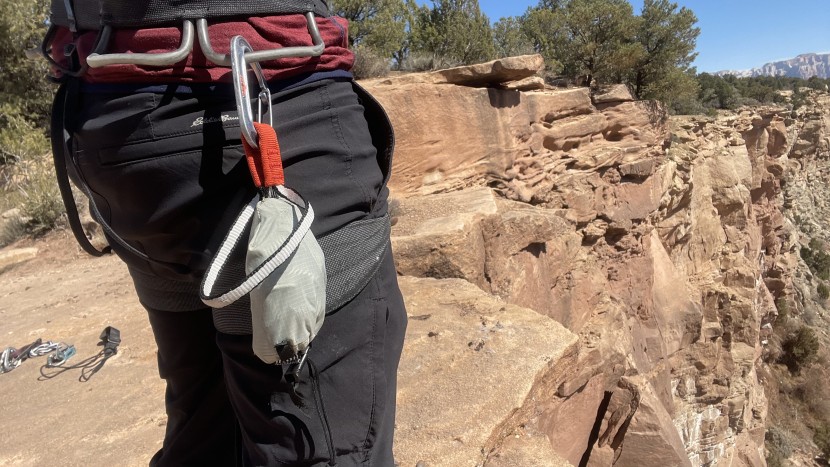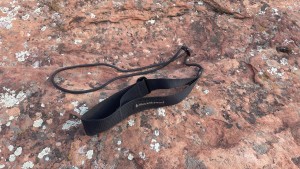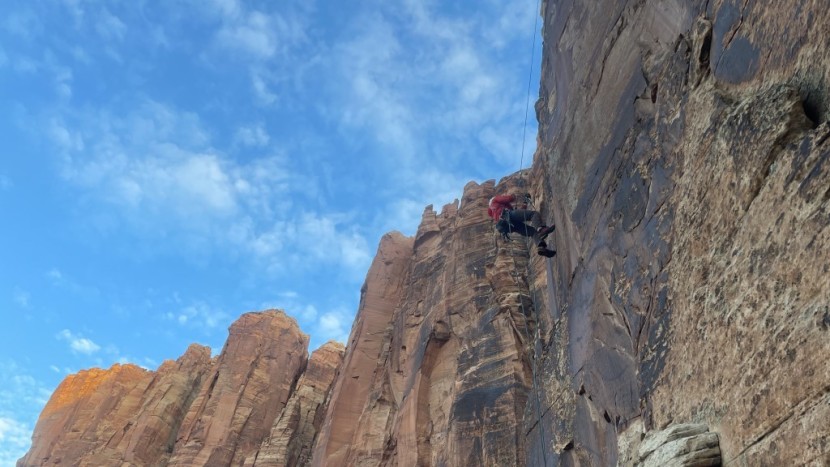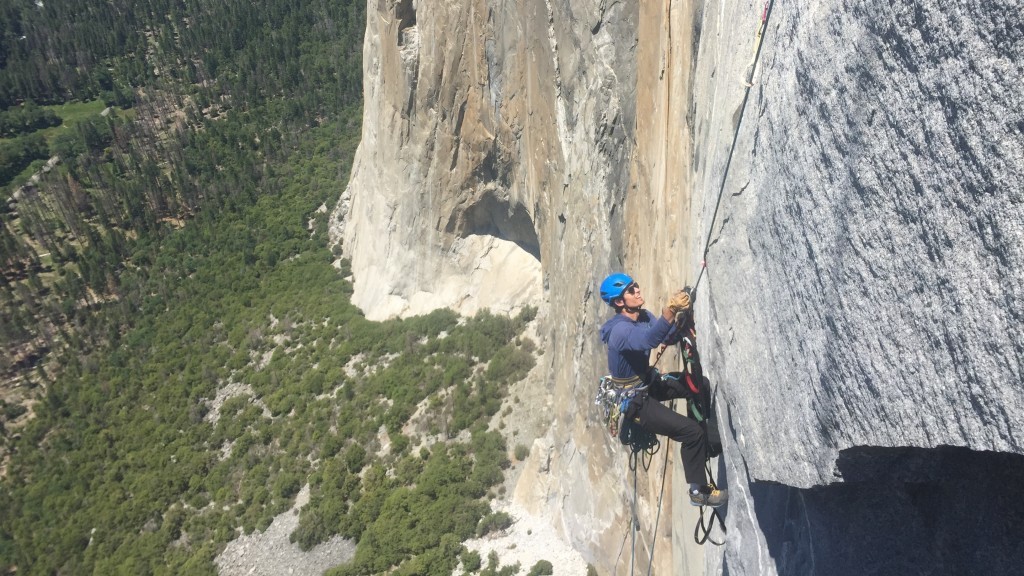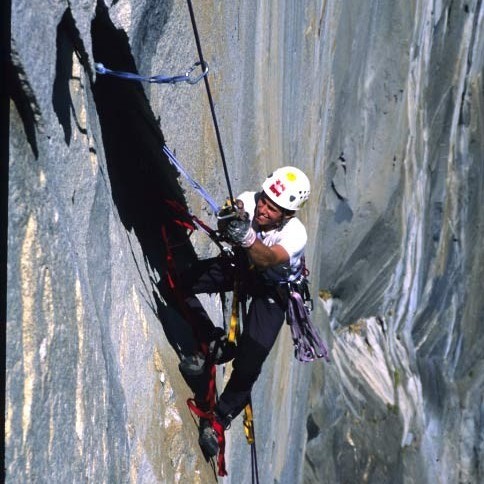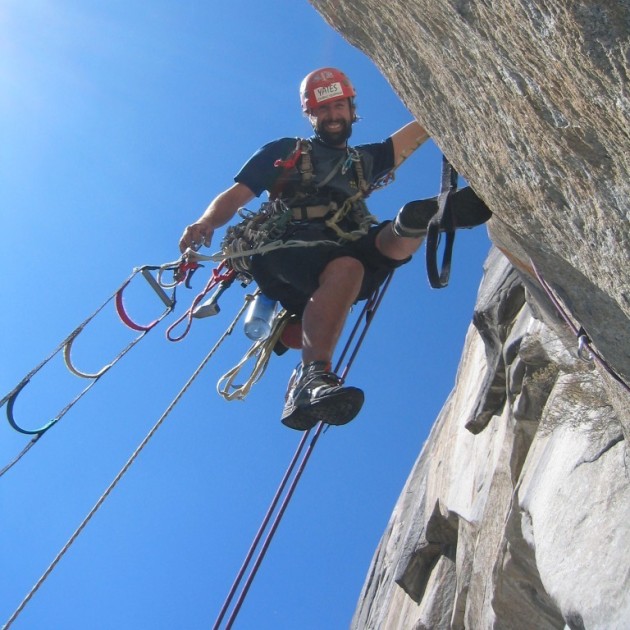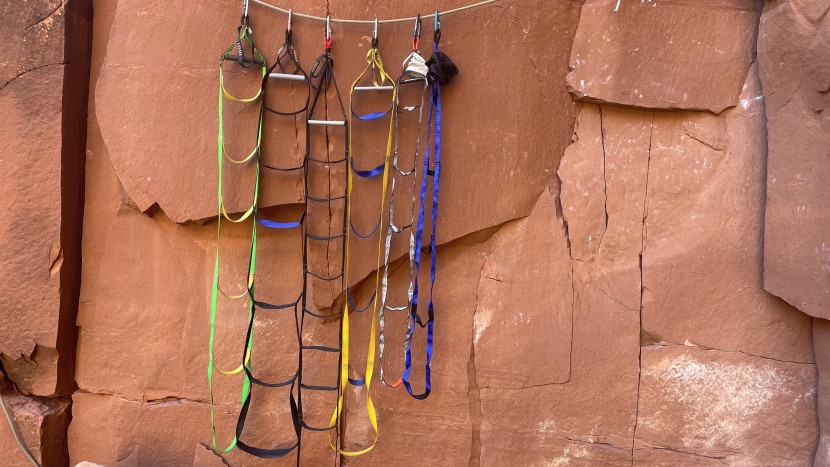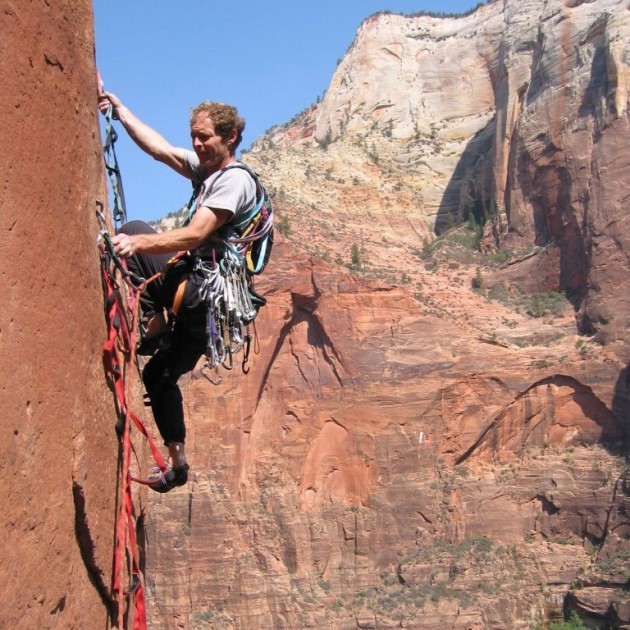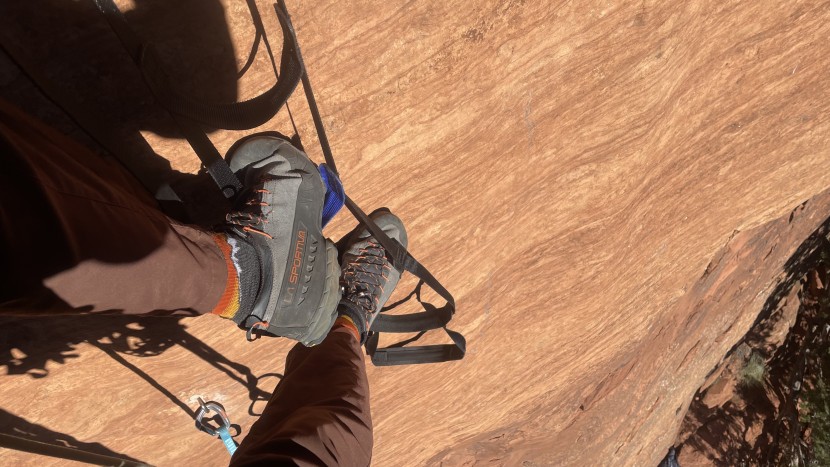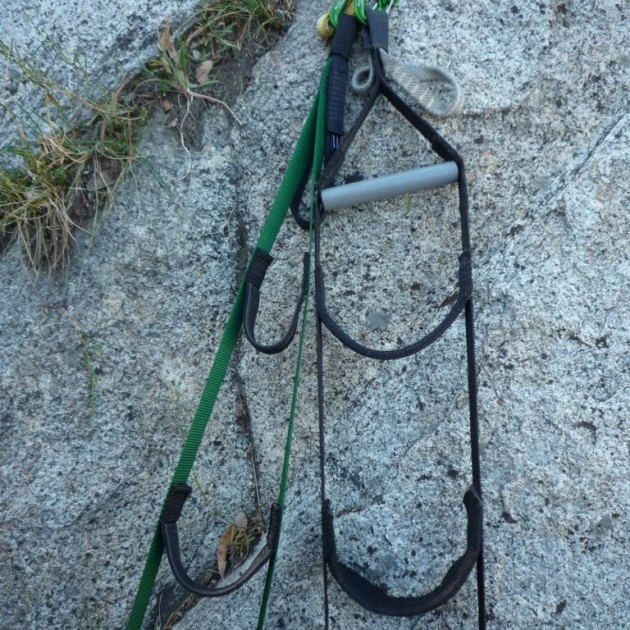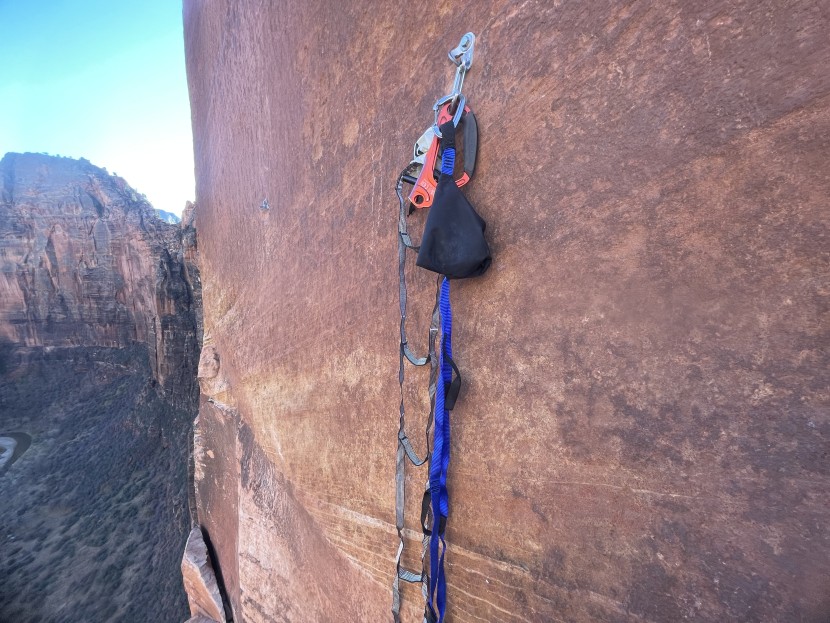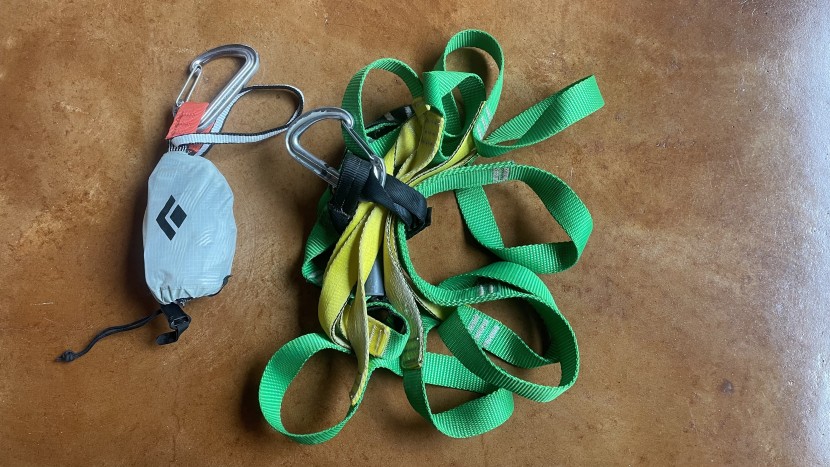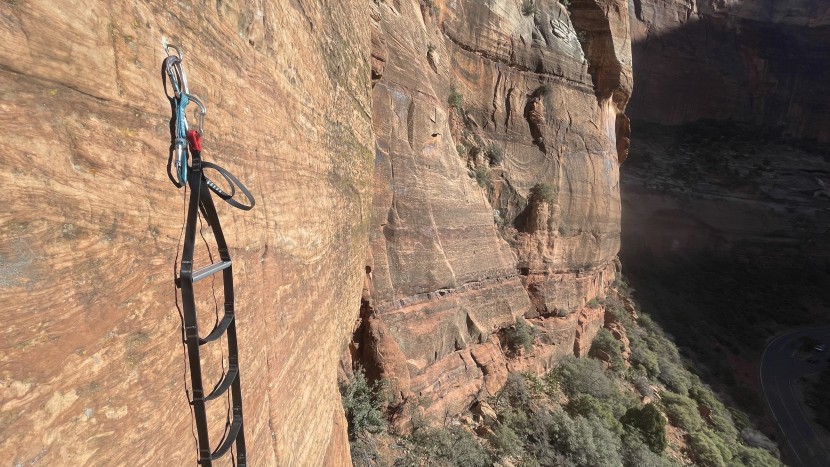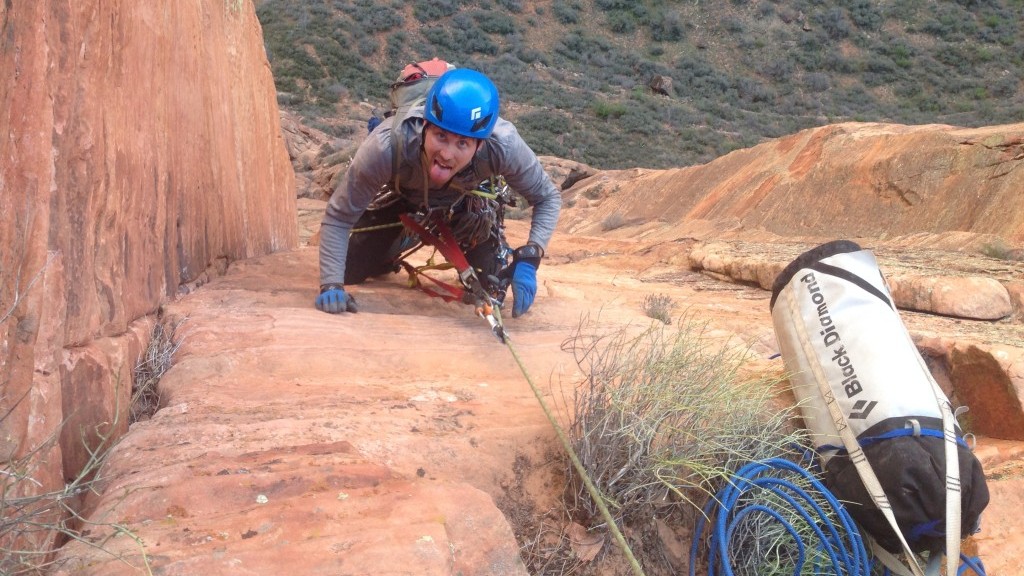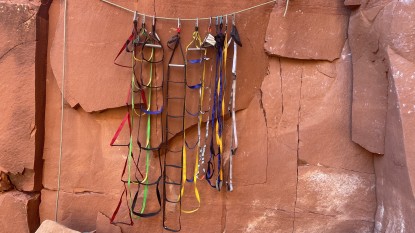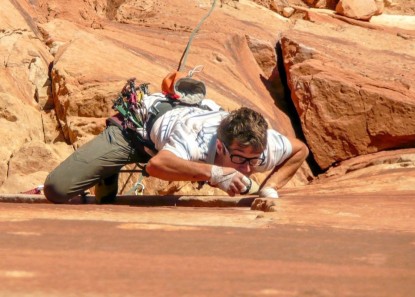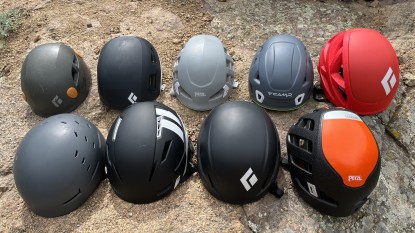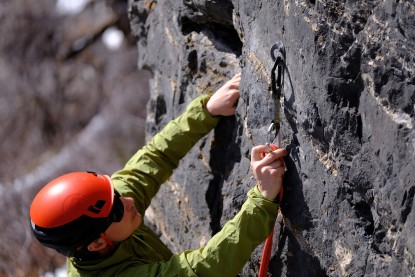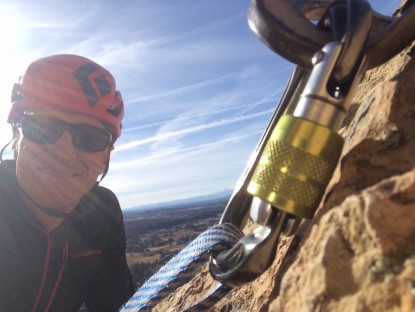Do you want to tie in and top-step but aren't sure which aider is best? We've tested 30 of the best aiders over more than a decade of testing and dozens of big wall ascents. For our current review, we tested 16 of the top ladders, etriers, speed steps, and pocket aiders available today. We compared them side-by-side on big walls in Yosemite and Zion and even as far as Baffin Island. We used them on aid-intensive walls, on light and fast alpine missions, and in support of big wall free climbing ascents. Our team of climbers helps break down nuanced differences between options, examining key considerations like climbing comfort, ladder stability, ease of top-stepping, and durability. Whether you're a hardened wall rat or new to the big wall game, our in-depth review offers expert recommendations to help you find the best aider for your next adventure.
Editor's Note: We recently overhauled this review: we updated our test plan, re-purchased and retested previous award winners, and added new aiders from Skots Wall Gear, Runout Customs, CAMP, Black Diamond, Metolius, and Petzl. We updated this review on May 20, 2024, with a new award-winning lineup.
Our Picks of Aiders / Etriers
Best Overall Aider
Yates Big Wall Ladder
| Style | Ladder |
|---|---|
| Measured Weight (ounces) | 14.1 |
| Measured Step Width (inches) | 1.75 |
| Measured Length (inches) | 67 |
| Warranty? | 1 year |
However, all of these features do come at the cost of weight and additional bulk. The Big Wall Ladder is easily one of the heaviest models in our lineup, and its relative bulk isn't nearly as nice to carry as others up long free pitches. Sometimes, the extra wide steps would snag on protrusions and things below us while aiding. We wouldn't take this on mostly free routes, like Tricks of the Trade in Zion – for routes like that, we suggest an etrier like the Metolius Alpine Aider that is easier to carry while free climbing. But for a big El Cap aid route like Zodiac, the Yates Big Wall Ladder is an ideal selection.
Best Bang for your Buck
Metolius 5 Step Aider
| Style | Etrier |
|---|---|
| Measured Weight (ounces) | 9.9 |
| Measured Step Width (inches) | 1 |
| Measured Length (inches) | 75 |
| Warranty? | 1 year |
Typically, we tend to prefer ladder aiders, like the Metolius 8-Step Ladder. It's easier to get away with two ladders, and we don't have to think so much about lining up our foot sequencing. Carrying two aiders is also not as heavy and a lot less bulky, which means less faffing about. Etrier-style ladders, like the 5-Step Aider also tend to twist easily, which can be annoying. Still, if you're looking for a budget option, the 5-Step option from Metolius offers a solid mix of features for the price.
Most Versatile Aider
Skots Wall Gear Aid Ladder
| Style | Ladder |
|---|---|
| Measured Weight (ounces) | 10.7 |
| Measured Step Width (inches) | 1 |
| Measured Length (inches) | 65 |
| Warranty? | None Listed |
This ladder could be improved with stiffer steps – like those on the Yates Big Wall Ladder. The steps on the Skots Ladder were a bit floppy, which sometimes made it hard to get our feet in while aiding corners or other odd positions. Even though we didn't use it very often – our main tester mostly uses just an adjustable Fifi hook to lead anything vertical or less – we wish that the daisy clip-in loop was full-strength rated, which would instill more confidence on fully extended placements. But the tradeoff for these concerns is decreased bulk, making this ladder slightly easier to carry while climbing free. As a result, it was a versatile option our testers used a lot while developing new routes in southern Utah.
Best Pocket Aider
Black Diamond Step Up LT
| Style | Pocket Aider |
|---|---|
| Measured Weight (ounces) | 3.7 |
| Measured Step Width (inches) | 0.75 |
| Measured Length (inches) | 55 |
| Warranty? | 2 years |
Even though this was our favorite pocket aider – much more so than the similarly designed Metolius Pocket Aider – we wouldn't throw it in our bag for any aid-intensive walls. The webbing is only 3/4" wide and is not particularly comfortable to stand in for long durations. The steps are narrow to begin with, and because they don't feature any stiffening material, they tend to squeeze our feet. If you're looking for a nice balance of weight and comfort, we suggest the more versatile Metolius Alpine Aider. But if you're going for mostly free routes or just need something to get through a bolt ladder, then the Step Up LT is a great choice.
Perfect for Jugging
Black Diamond Speed Step Pro
| Style | Speed Step |
|---|---|
| Measured Weight (ounces) | 2.4 |
| Measured Step Width (inches) | 1.5 |
| Measured Length (inches) | 50 |
| Warranty? | 2 years |
With a design similar to some tent guylines, the simple length adjustment is easy to use, but it cannot be adjusted when weighted. While it's a small thing and not altogether necessary, it would be nice if this speed step came with some sort of bag (more for storage than anything). It's important to point out that, like the similarly designed Petzl Quickstep, the Speed Step Pro is not designed for leading aid pitches. But if you use the Speed Step Pro for what it's meant for – which is ascending a rope – it's a useful tool to have in your bag.
Compare Products
How We Tested
Aiders are a bit of a niche product, but Outdoor Gear Lab's roots are in reviewing climbing gear. As a result, we've been testing the best aiders for well over a decade. Our selection process leans on the hard-earned expertise of experienced big-wall climbers, who stay informed of the latest and greatest products whenever they hit the market. Our testing takes place over many months as we haul these ladders up to test them side-by-side on big wall ascents in the Yosemite Valley of California and Zion National Park in Utah. In addition to rigorous field testing, we weigh and measure each aider to verify manufacturer claims and closely examine their design and material selection to better inform our experiences with durability. The result is the most comprehensive review of aiders available, all based on the real-world experience of our expert test team.
Our testing of aiders is divided into five performance metrics:- Comfort (35% of overall score weighting)
- Walking Up (35% weighting)
- Free Climbing (10% weighting)
- Top Stepping (10% weighting)
- Durability (10% weighting)
Why You Should Trust Us
The foundation of this review was laid by Chris McNamara. Chris is the founder and editor-in-chief of Outdoor Gear Lab, which originated from Chris's big wall gear reviews – like this one – on SuperTopo. Chris has climbed 100+ big walls in Yosemite, Zion, and elsewhere in the world. He's held speed records on El Capitan, the Streaked Wall in Zion, and spent untold hours in aiders while leading, hauling, and jugging.
Even though he's newer to the game than the incomparable Chris Mac, our lead tester, Ethan Newman has been climbing big walls and developing big routes for over a decade. He's established new grade IV+ walls in Zion, as well as claiming early repeats of many A3, C3 grade V routes in the area. Together, our testing team estimates that they have climbed over 100,000 vertical feet of big walls and spent weeks' worth of time standing in aiders.
Analysis and Test Results
First off, let's define our terms. What we call an “aider” is any type of webbing ladder used for aid climbing. There are two main styles: ladders and etriers. An etrier-style aider has loops on alternate sides of a main support pillar for alternating steps with your left or right foot. A ladder-style, on the other hand, has a series of larger loops with support structures on either side – it is essentially a fabric version of a common ladder.
In his book on How To Big Wall Climb, Chris McNamara stresses that efficiency in leading aid pitches has the biggest impact on a successful big wall ascent. Choosing your gear wisely – including, of course, a series of ladders – is intrinsically tied to this success. Our in-depth review walks you through the nuanced differences in this essential piece of big wall gear and considers which is the best choice for a particular objective.
What's the Best Value?
All aiders perform the same duty – they allow you to stand while you figure out the next piece of the vertical puzzle ahead – so there isn't a huge spread of price points despite the number of options available. However, the differences in construction, features, and, namely, weight and bulk, can make a big difference in choosing the right aider. And for dirtbag climbers looking to stretch their paychecks, fortunately, there are more than a few good options for saving some cash.
While top models like the Yates Big Wall and Speed Wall Ladders are expensive, it's important to remember that their function and durability make them versatile, long-lasting companions. Other classic options, like the Fish Smart Aider, are specifically built for longevity amidst the rough-and-tumble nature of big wall climbing. But considering price versus performance – in addition to versatility – there is no better value than the Metolius 5-Step Aider. It's comfortable to walk up, offers a nice variety of substeps for top stepping, and is fairly reasonable to carry for free pitches. Plus, the price for a single piece is unbeatable.
Two or Four Aiders?
Be aware that for more aid-intensive walls, some folks climb with four aiders instead of two, which somewhat negates any savings of even the most cost-effective aiders on the market (not to mention the weight savings). While etriers like the Metolius 5-Step function well as a two-aider system, you have to be a little more intentional about your foot sequence as you walk up the steps, compared with a standard ladder that can accommodate either foot on every step.
Comfort
The biggest difference in comfort tends to be the width of the step, but stiffeners also play an important role. Our feet really aren't designed to stand for long periods in a thin loop of webbing – it wreaks havoc on our arches, not to mention the endurance workout for our calves. So considering that aiding requires just that, whatever steps disperse the weight of our bodies the best are the most comfortable to stand in.
Thanks to a piece of webbing sewn over a 1.75" step and stiffener, the Yates Big Wall Ladder was the most comfortable to stand in for long periods of time. The similarly designed, albeit lighter weight Speed Wall Ladder isn't far behind, but the slightly thinner, 1" step isn't quite as comfortable. The 1.5" step on the Black Diamond Speed Step Pro is also quite comfortable, which makes long pitches of jugging or providing a hanging belay slightly more bearable.
Metolius aiders with the Biothane stiffeners – including the 8-Step Ladder and 5-Step etrier – are also fairly comfortable. Although they didn't have stiffeners, we did quite like the Runout Customs 6 Step Ladder and Skots Wall Gear Aid Ladder as well. The webbing and spreader bars on both do a decent job of keeping the steps from folding in and pinching your feet, which makes it possible to stand in them comfortably for extended periods.
Walking Up
Being able to confidently and quickly walk up your aiders is key to efficient aid climbing. An extra minute faffing about with steps can add up to an extra half hour or more spent on each pitch, slowing the entire operation down by hours, if not days. Just like the design of your normal, everyday ladder, aiders with broad, stiff, open steps are the easiest to walk up.
Ideally, you should be able to walk up your aiders without adjusting your daisy chains until you're high enough to hook into the top carabiner. In general, ladder-style aiders are easier to walk up than etriers, with a notable exception when navigating very tight corners. Etrier-style aiders require a specific foot sequencing that doesn't always line up with your current position. Additionally, they tend to get twisted easily, which is always annoying.
Comfort tends to be tied directly to ease of walking up, and once again, the Yates ladders stand out in this metric. We also liked the Runout Customs, Skots Wall Gear, and CAMP Ladder. All three models include spreader bars that do a great job of holding the steps open, and while they're not quite as Yates Big Wall, the 1" steps on these three models are easy to step up. The stiffened steps on the Metolius 5-Step etrier stay open easily and are a bit wider than those on the Alpine Aider, but both twist easily.
Free Climbing
Aid climbing is almost always slower than free climbing. Being able to bust a free move with aiders on your harness or free climb up to the impassable parts will help you move efficiently up a big wall. Some routes also don't require the big, burly ladders necessary for slow pitches of aiding. Instead, you may encounter a bolt ladder or an easy C1 pitch on a mostly free route (think Eagle Dance in Red Rock or Tricks of the Trade in Zion).
This metric is where pocket aiders shine, and our favorite is the Black Diamond StepUp LT. It's light, deploys easily, and has a spreader bar to easily transition from a foot in a crack to a foot in a step. The Metolius Pocket Aider and Petzl Gradistep were also easy to free climb with, tucking nicely away in small nylon pouches that didn't snag when our testers squeezed into tight chimneys. The speed steps – like the BD Speed Step Pro and the Petzl Quickstep – are only about as bulky as a cordelette, so they rack easily.
Although ladders and larger etriers only ever pack down into a collection of bulky loops, we do have a trick to help rack them more efficiently. We use the grab loop to wrap around the steps and clip back into the carabiner at the clip-in point, creating a quick-deploying bundle for climbers transitioning from freeing to aid. Using this method, the slightly lighter weight, relatively less-bulky Runout Customs was one of the most packable ladders we tested.
Top Stepping
On less-than-vertical walls, top stepping is key to making efficient progress, skipping sketchy placements, and occasionally even reaching fixed gear. The higher you can get with every step, the faster you'll be, and the more options you'll have for placements. One extra piece of equipment we often use is an adjustable Fifi Hook to comfortably lock in while standing high in our aiders. In our experience, this combination is key for efficient aid climbing, especially when it comes to getting up the hardest pitches.
Our favorite ladder for top stepping is from Skots Wall Gear. Its nominal top step is a standard 12" from the clip-in loop. However, the flat spreader bar creates an additional step a mere 7" from the clip-in point, giving you five extra inches of reach. While that may not seem like a lot, that can be the difference between an iffy placement in a flaring pin scar and the solid security of a bolt. While the CAMP Ladder also has a flat spreader bar, it is five inches lower than the one on the Skots ladder.
While this metric is similar to the Walking Up metric, it isn't exactly the same. For example, the Yates Big Wall ladder is easy to walk up, but the top step is 13 inches from the clip-in point. While this is a touch further away than other ladders, this top step is easy to get into, so we're more likely to use it. The Metolius 5-Step etrier features sub-steps in the top two steps, which can be helpful for adjusting your foot sequence. While these are only 10 inches away from the clip-in point, they're finicky to get in and out of, especially compared to stepping on a flat spreader bar. These may seem like nuanced points to the uninitiated, but to anyone who has been up a big wall, these nitty-gritty details can make a big difference.
Durability
If you only climb aid routes every once in a while, durability is not a huge concern – every model in this review is designed for the rigors of aid climbing. But if you're going deep into the dark art of aid climbing, you might consider a product that can be literally beaten against a wall over and over again. Yet again, the heavy-duty Yates ladders stand out. Based on the amount of fabric alone, these ladders are going to hold up for a long time – our lead tester has owned a set of the Big Wall Ladders for over a decade, and they're still going strong.
The Yates, Runout Customs and Skots Wall Gear ladders, and (surprisingly) the ultralight BD StepUp LT pocket aider all have extra webbing sewn on either side of the spreader bar to account for the highest wear point on the ladders. Also, every model in this review – with the notable exceptions of the BD Speed Step Pro and Petzl Quickstep – has a reinforced clip-in point. We also noticed some additional wear on the 3/4-inch flat webbing of the Speed Step Pro, which makes sense due to just how thin the webbing is on that speed step.
Conclusion
The best approach to climbing big walls is to find a way that works well for you and your partner(s). To stack the odds in your favor, the goal of this in-depth review is to help you easily find the best aider for your next project. Every product we tested works well in the context of aid climbing, but remember that certain options will work better depending on your goals and techniques. If you're in the market for any other equipment, make sure to check out our comprehensive list of climbing gear on the market.
—Ethan Newman & Chris McNamara


